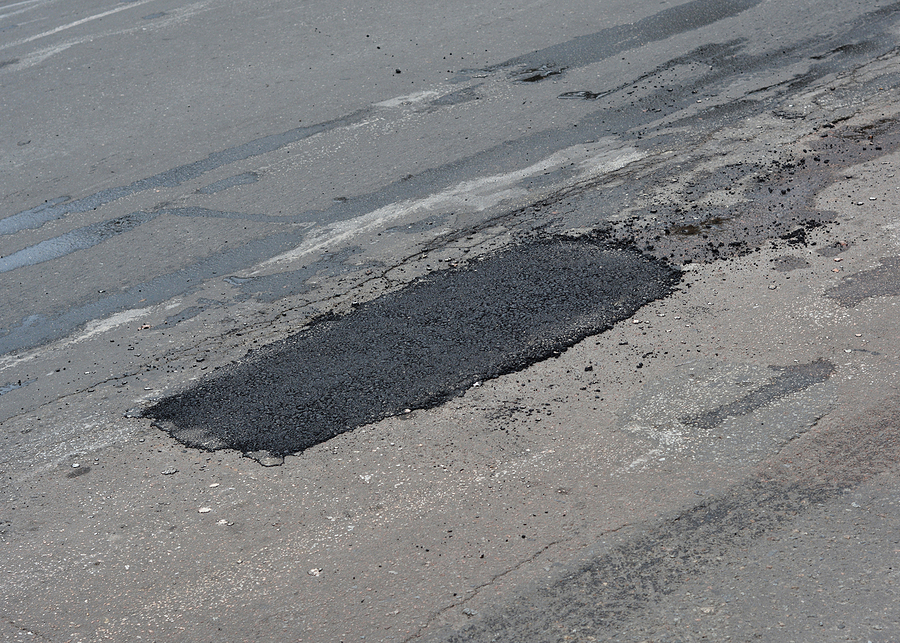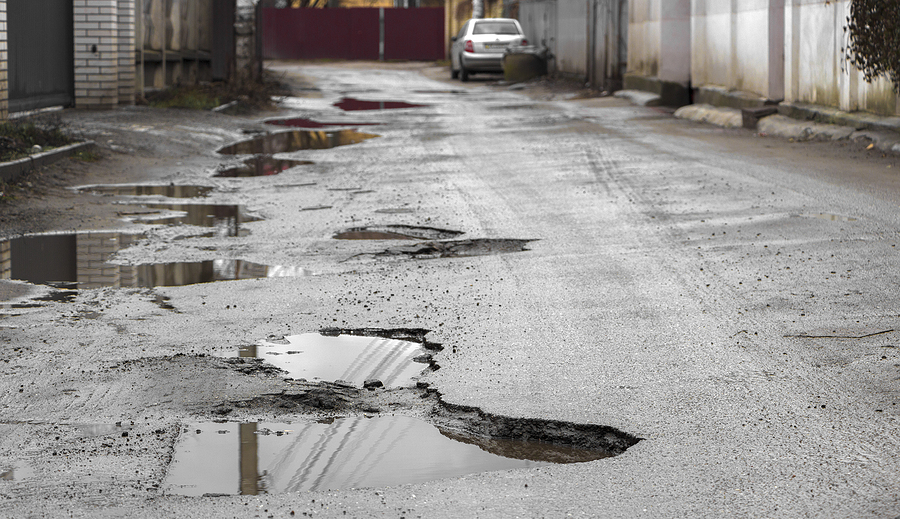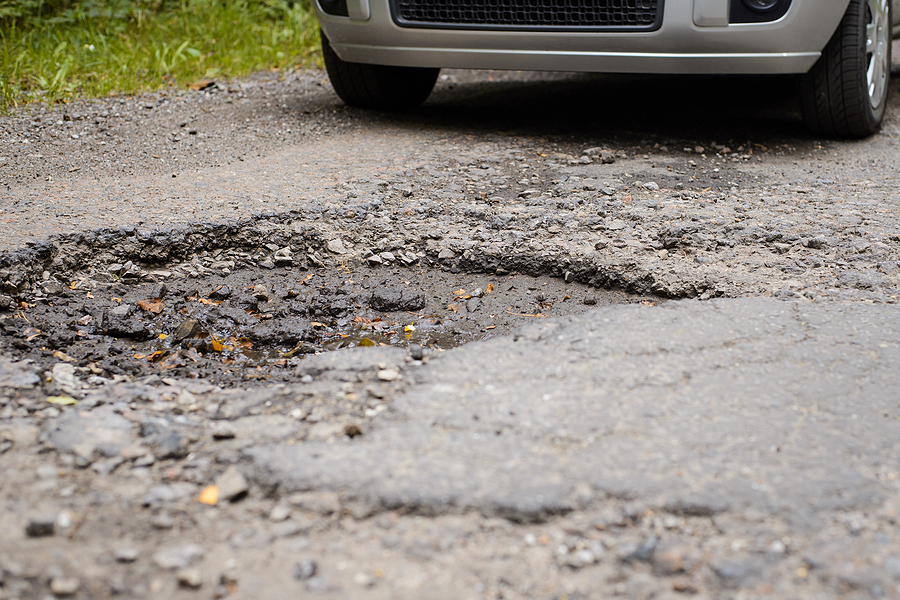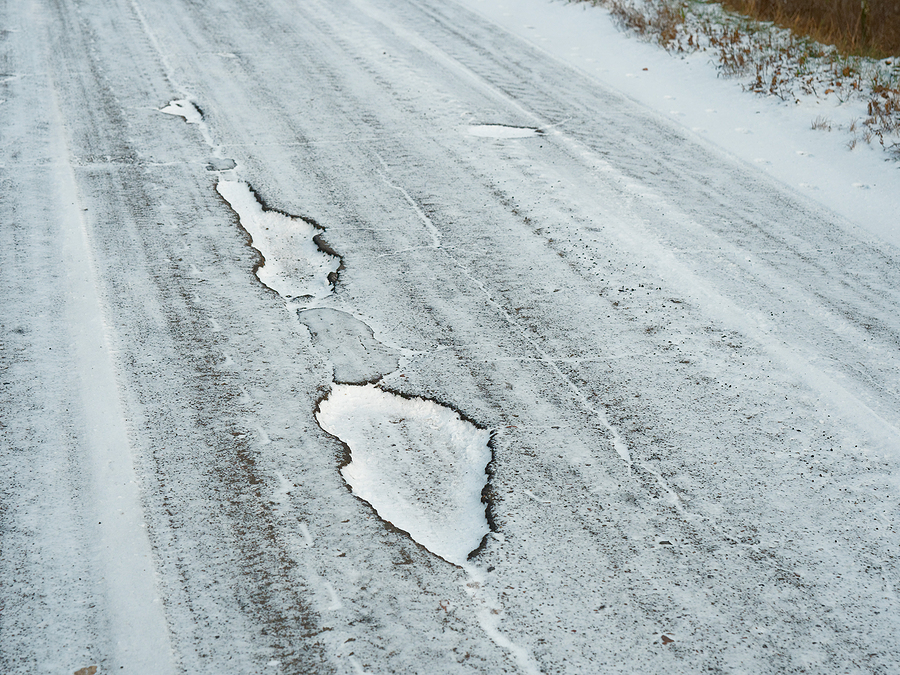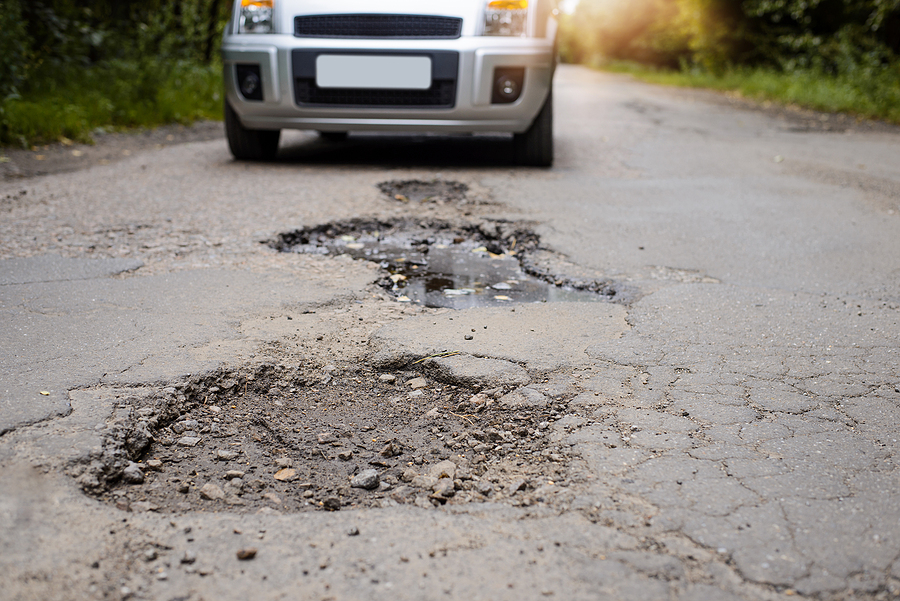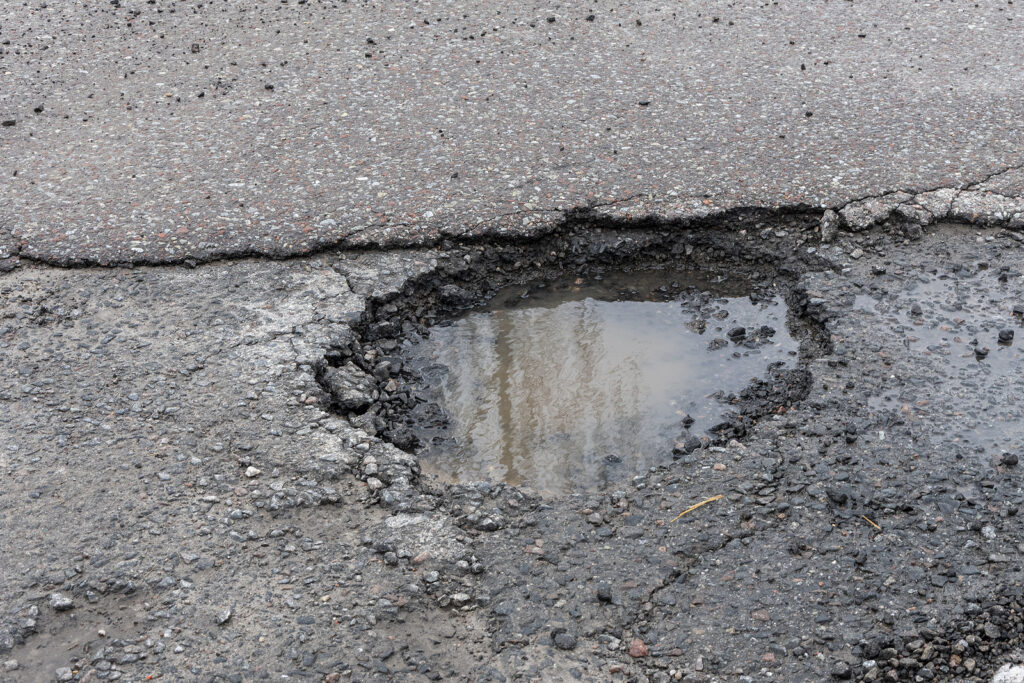A well-maintained parking lot offers a welcoming first impression. However, when the surface is riddled with cracks and potholes, it can quickly become a significant problem. Those seemingly small craters are more than just an eyesore; they are genuine safety hazards that can lead to vehicle damage and serious liability issues for property owners.
This guide will explain why timely pothole repair is crucial for your property. We’ll explore the risks associated with parking lot potholes, compare DIY fixes with professional pothole repair, and offer practical tips for long-term pothole prevention. Understanding these elements is key to maintaining a safe, attractive, and cost-effective property.
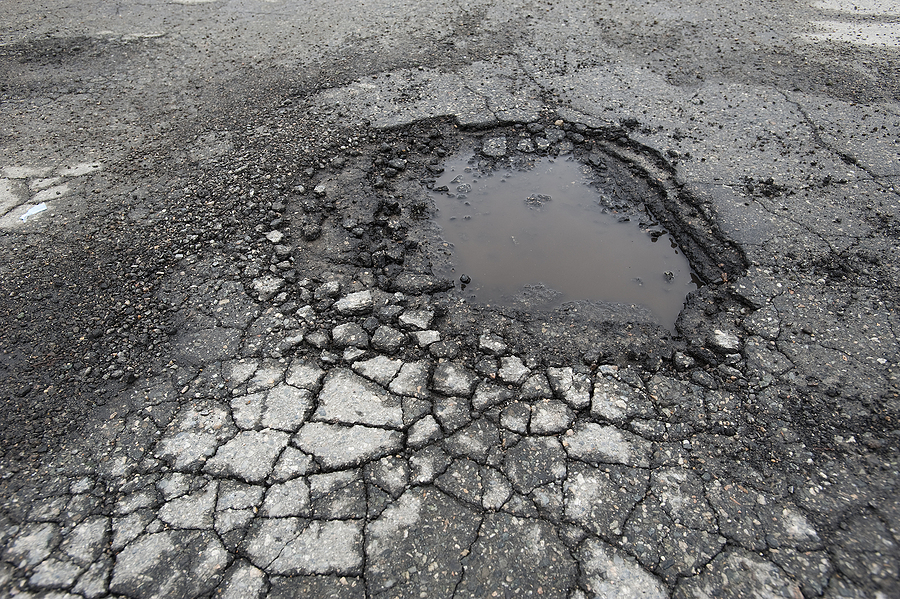
Why Pothole Repair Is Essential
Parking lot potholes are not a problem you can afford to ignore. They pose direct risks to everyone who uses your property and can create significant financial and legal challenges for you as the owner.
Safety Hazards and Premises Liability
Potholes are a major cause of trip-and-fall accidents, which can lead to sprained ankles, broken bones, and other serious injuries. Drivers can also lose control of their vehicles when hitting a deep pothole, potentially causing collisions. As a property manager or business owner, you have a legal responsibility to maintain a safe environment for visitors and employees.
Failing to address these hazards can result in premises liability claims. In fact, neglecting parking lot maintenance and pothole repair can increase these claims by a alarming amount. The legal fees, medical bills, and settlement costs associated with a single lawsuit can far exceed the expense of professional commercial pavement repair.
Costly Vehicle Damage
Potholes are notorious for causing expensive damage to vehicles. Driving over a deep crater can lead to:
- Tire punctures and blowouts
- Bent rims and damaged hubcaps
- Suspension and alignment issues
- Damage to the vehicle’s exhaust system
When customers or tenants consistently face vehicle damage in your parking lot, they may choose to take their business elsewhere, impacting your reputation and bottom line.
The Broader Impact of Neglected Potholes
The consequences of ignoring potholes extend beyond immediate safety and financial risks. They can also damage your property’s reputation and deter potential customers.
Damaged Property Appearance
Your parking lot is the first thing visitors see when they arrive at your property. A surface covered in cracks and potholes sends a message of neglect and poor management. It can make an otherwise beautiful property look run-down and uninviting, diminishing its curb appeal and overall value. For business owners, this can create a negative first impression that is hard to overcome.
Negative Customer Perception
A poorly maintained parking lot can influence how customers perceive your business. It suggests a lack of attention to detail and a disregard for their safety and comfort. This can lead to a loss of trust and loyalty. Customers may choose competitors with safer, more welcoming facilities, directly impacting your revenue. For residential properties, a neglected parking lot can make it harder to attract and retain tenants.
View Our Parking Lot Pothole Repair Solutions ☑
DIY vs. Professional Pothole Repair
When a pothole appears, it might be tempting to try a quick DIY fix. While this seems like a cost-effective solution, it often leads to more significant problems down the line.
The Limits of DIY Pothole Patching
Most DIY pothole patching involves using a cold patch asphalt mix from a local hardware store. While this method can provide a temporary fix, it has several drawbacks:
- Improper Preparation: DIY repairs often skip crucial steps like cleaning the pothole, removing debris, and applying a bonding agent. Without proper preparation, the patch won’t adhere correctly.
- Low-Quality Materials: Store-bought cold patch materials are generally less durable than the hot mix asphalt used by professionals.
- Short-Term Solution: Due to poor adhesion and weaker materials, DIY patches often fail quickly, especially in areas with heavy traffic or harsh weather like Indiana’s freeze-thaw cycles. The pothole will likely reappear, requiring repeated repairs and costing more in the long run.
The Advantages of Professional Repair
Hiring a professional commercial pavement repair company for your parking lot repair ensures a durable, long-lasting solution. Professionals bring expertise, specialized equipment, and high-quality materials to the job. The benefits include:
- Expert Assessment: Professionals can identify the underlying cause of the pothole, such as water infiltration or a weak sub-base, and recommend the correct repair strategy.
- Thorough Preparation: The repair process includes cleaning, squaring the edges of the pothole, and applying a tack coat to ensure the new asphalt bonds securely.
- High-Quality Materials: Professionals use materials like Hot Mix Asphalt or Polymer-Modified Asphalt, which provide superior durability and flexibility. They can also recommend specialized materials like concrete patches or eco-friendly options.
- Proper Compaction: Using professional-grade equipment, the patch is compacted to the correct density, preventing water from seeping in and causing future damage.
A professional pothole repair may have a higher upfront cost, but it provides a permanent solution that saves you time, money, and hassle in the long run.
The Professional Pothole Repair Process
A professional approach to pothole repair is a systematic process designed for durability. Here are the typical steps involved:
- Assessment: A paving expert inspects the pothole and the surrounding pavement to determine the extent of the damage and its root cause.
- Preparation: The area is cleaned of all water and debris. The edges of the pothole are squared off with a saw to create a solid boundary for the new patch.
- Application: A tack coat (adhesive) is applied to the bottom and sides of the hole to ensure the new asphalt binds with the existing pavement.
- Filling: Hot Mix Asphalt or another appropriate material is poured into the prepared hole. The material is layered slightly higher than the surrounding surface to account for compaction.
- Compaction: A vibratory plate compactor or roller is used to compress the asphalt, creating a dense, seamless patch that is level with the rest of the parking lot.
Long-Term Pothole Prevention Strategies
Repairing existing potholes is only part of the solution. Proactive maintenance is key to preventing new ones from forming.
- Regular Inspections: Walk your parking lot regularly, especially after heavy rain or snow, to look for small cracks or signs of wear.
- Crack Sealing: Fill small cracks as soon as they appear. This prevents water from seeping into the pavement’s sub-base, which is the primary cause of potholes, especially during Indiana’s freeze-thaw cycles.
- Sealcoating: Apply a sealcoat every 2-3 years. This protective layer shields the asphalt from water, sunlight, and chemicals, extending its lifespan.
- Ensure Proper Drainage: Check that your parking lot’s drainage system is working correctly. Standing water is a major contributor to pavement deterioration.
Conclusion
A well-maintained parking lot is a vital asset for any commercial property. Timely and professional pothole repair is not just about aesthetics; it’s a critical investment in safety, liability protection, and your property’s long-term value. By addressing parking lot potholes promptly and implementing a preventative maintenance plan, you can create a safer environment for everyone and avoid costly repairs and legal issues.
Don’t wait for a small problem to become a major liability. Protect your investment and ensure the safety of your visitors. Our expert winter cold patching services can address your current parking lot repair needs while preventing future problems.
Request a Pothole Repair Quote
Related Post: Your Complete Guide to Commercial Pothole Patching

